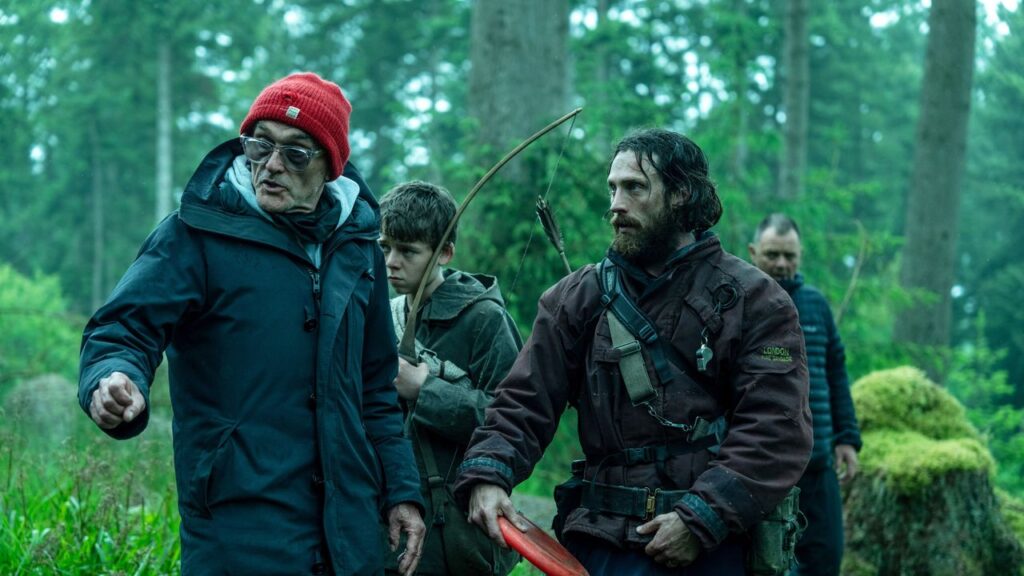By taking something like an iPhone and by choosing that kind of technique, you’re climbing up a hill. You know, that there are certain things you certainly can try and do in a different way, which is a freedom. But there’s also a lot of things you can’t necessarily assume you can do in the same way we’re trained and professionally skilled to do. Whatever it is we have achieved, whatever it looks like, it’s been a long, long journey from those first initial conversations to the final result, and it always is, and it’s full of potholes of chaos, and it’s full of wonderful surprises and unforeseeable positives and negatives along the way. And that’s what really happened. From the beginning of prep until the shoot, we were still discovering [things].
What were some of the challenges of using these devices to make a movie like this?
Boyle: What’s extraordinary about using them is that they’re everywhere. We all rely on them. They’re incredibly powerful. Now they can shoot in 4K, 60 frames a second, which is way more than you need for cinema release. And yet, there’s something unreliable about them, when you use them like that. They snatch at the information. Film is much more fluid at capturing it. I don’t know why, because it’s still going through a shutter. Ultimately, built into [the iPhone] is the feeling that this could be erased at any moment—if there was a pulse, a solar pulse, one of the nightmares we face, could easily face, is that everything could be erased, and we’d still probably be alive.
Mantle: We weren’t exactly sure on day one of prep, exactly what specific tool [we’d be using.] Different cameras are equally capable as each other in some situations, whereas in other specific environments, where you have extreme cold or you are looking for extreme resolution in an area where you can only work with available lights, then obviously you’d look for a larger sensor, or even a large celluloid negative format to bring home what God can give you and nobody else but God gives you, because you know that you’ve got a massive negative or a massive digital sensor that can record pretty well everything, to a certain degree, to high quality. There were some days where I was standing on, you know, the most extraordinary, beautiful edge of a piece of terrain or territory in Britain, [and] in my heart and soul, and perhaps also somewhere in Danny’s soul, there is an instinct in us that just wants to capture that in all its glory in the best possible way, in the best possible resolution to give the audience as close as possible an experience of what we are experiencing with our brains in high res.
GQ: You’ve talked a little bit about having to bypass some of the existing iOS software on the phone in order to have more control over the images you were capturing. Were there any instances in which you were unable to bypass the way that you wanted to, and yet were still able to achieve an interesting look that you ended up using in the movie?
DB: There’s two shots that we didn’t override. We just used the camera out of your pocket. I just shot them because we just needed these couple of shots. And that, again, is a bit like the first film—because I shot stuff [for 28 Days Later] in my back garden. There’s a shot of Cillian in the first film when he looks up and sees that there’s a plane, and I shot that plane in my back garden.
Is there an image-capture technology you’re hoping to experiment with next?
Mantle: Yeah—tomorrow’s. So when you know what tomorrow’s technology is, just give me a shout, drop me a mail, let me know. I am interested in tomorrow.


